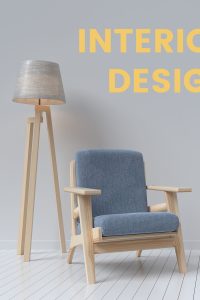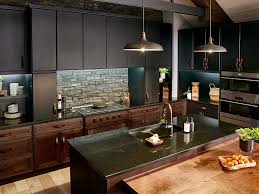Because cabinets are such a focal point of a kitchen, it is vital to choose the right style of cabinet and a finish that will provide beauty and durability. Below are a few of the most common types of kitchen cabinet finishes.
Natural
Table of Contents
A natural finish is one in which no toners, stains or paints have been applied. A simple clear top coat is applied to protect the wood’s natural beauty. When choosing natural wood cabinets, remember that any unusual patterns in the grain, natural mineral streaks in the wood and other inconsistencies will show.
Stain
Stains range from light to dark, from opaque to almost transparent and in a variety of hues. The staining process involves applying the stain uniformly to the wood surface and wiping off the excess so that the desired color saturation is achieved. When choosing kitchen cabinets, remember that different woods stain differently – the overall color and shade is a result of a combination of the stain and properties of the wood. For example, although medium-to-dark stains tend to look blotchy on maple, they get deeper and more glowing on cherry, with a more consistent coloration.
Paint
Painted cabinets come in variety of colors however white and off-white are the most popular colors, as they tend to match kitchen appliances better. Because wood expands and contracts naturally with changes in temperature and humidity, hairline cracks may appear, but this does not require cabinet door replacement. In some cases medium density fiberboard (MDF) can be used for the center panels of frame and panel cabinet doors. MDF is not affected by humidity changes and helps reduce hairline cracks by reducing surface stress.
Glaze
Glazes are a cross between painting and staining and are useful for adding accent colors to the primary finish, while highlighting details such as routing, grooves and edges. Glazing involves several steps and can be applied either wet or dry. Wet glaze is applied when the primary finish is still wet, while a dry glaze is applied after it is dried. Wet glaze mixes with the stain to alter its color, while dry glaze is a separate layer from the stain. Application technique is very important; a glaze can have a brushed appearance, a pencil thin line of glaze, a heavy, diffused brushed finish, or a wiped finish that shows the rag marks.
Distressed
Distressed finish consists of adding imperfections to cabinet doors, in addition to or combined with other finishes, to give wood cabinets an aged, distressed, rustic appearance. Common distressing techniques include adding wormholes, rasping, dings and dents, and sanding through the layers of finish and wood unevenly.
Top Coat
Cabinets should always include a top coat to improve strength and durability. These top coats usually consist of lacquer or urethane and include UV inhibitors that prevent damage from light and sealants to protect the wood.

